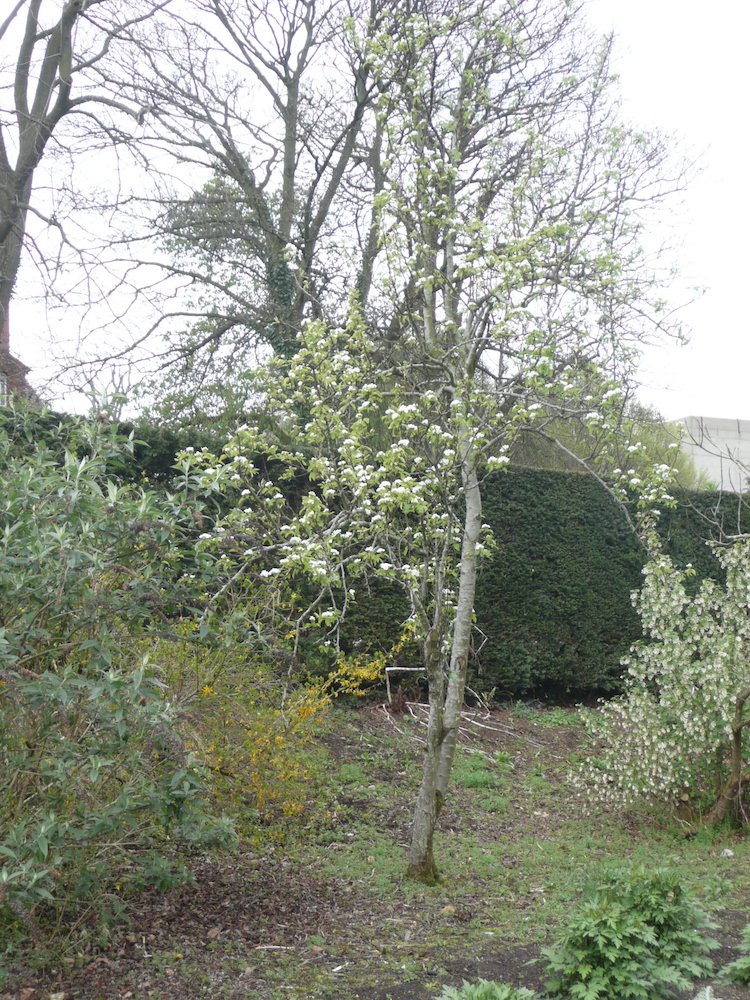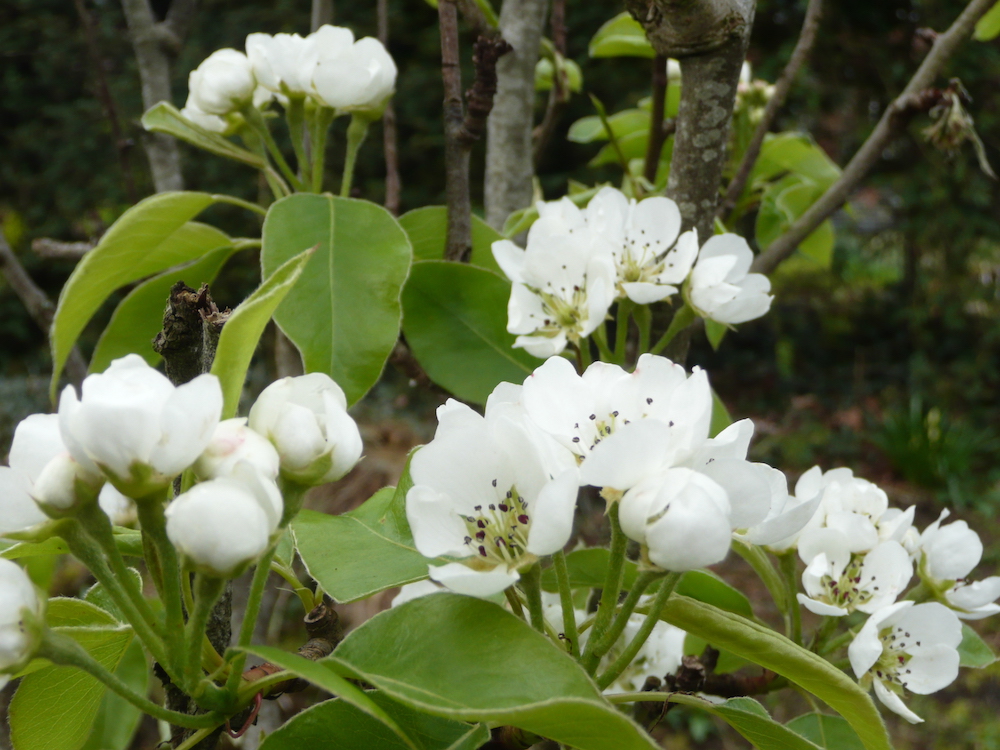Pyrus communis L.
Cultivated pear, variety 'Williams Bon Cretien'
The Williams pear is the most commonly grown variety of dessert pear in countries outside Asia. The full name certainly has a ring to it, and derives from a somewhat dubious legend concerning the gift to the king of a pip of a pear from his native Calabria by a holy man (the good Christian) present at the deathbed of King Louis XI of France.
The more historically plausible account dates the pear to the years 1765-1770 when it originated in the garden of a schoolmaster, was later acquired by a nurseryman Richard Williams of Turnham Green near Chiswick who formally named it in 1814 and spread it around the UK. The pear reached the US and became widely grown there under the name the Bartlett pear, although it wasn’t until 1823 that this was recognised as one and the same pear as ‘Williams Bon Chretien’.
The fruit has the typical pear shape that rounds out in the lower half and is considered to have the definitive pear flavour and aroma. It is sweet and juicy, has none of the gritty texture of some pears, and this may have contributed to its almost universal use in the US especially in the canning industry, where in 2004 it accounted for some 50% of pear production. It starts the season in Australia where some 130,000 tonnes are grown annually, 47% of these being ‘Williams’.
The specimen in the Belfast Botanic Gardens is probably less than 15 years old, stands about 2.5m in height and 1m in spread; it is double stemmed. While it bears blossom, it is perhaps not surprising, given its situation, that mature fruit is rarely seen. Like all pears it should be picked while still green and relatively hard. It is then stored in a dry place, out of the sun for up to a week or so, to ripen. It is important to watch pears closely in order to catch them at the moment of perfection, to eat them at their best.
The Williams pear, flowering group 3, is partially self-fertile so will set a crop on it own, but it benefits from the presence of compatible pears such as ‘Conference’, ‘Concorde’ or ‘Doyenne du Comice’ among others, that flower around the same time. Pears are one of the oldest fruits and were enjoyed by the Romans more than 3,000 years ago. While it is often said that pears are for heirs, modern rootstocks and growing methods enable anyone to plant a pear and enjoy some fruit in a few years.




Photos taken in Belfast Botanic Gardens in 2015. Copyright: Friends of Belfast Botanic Gardens.
